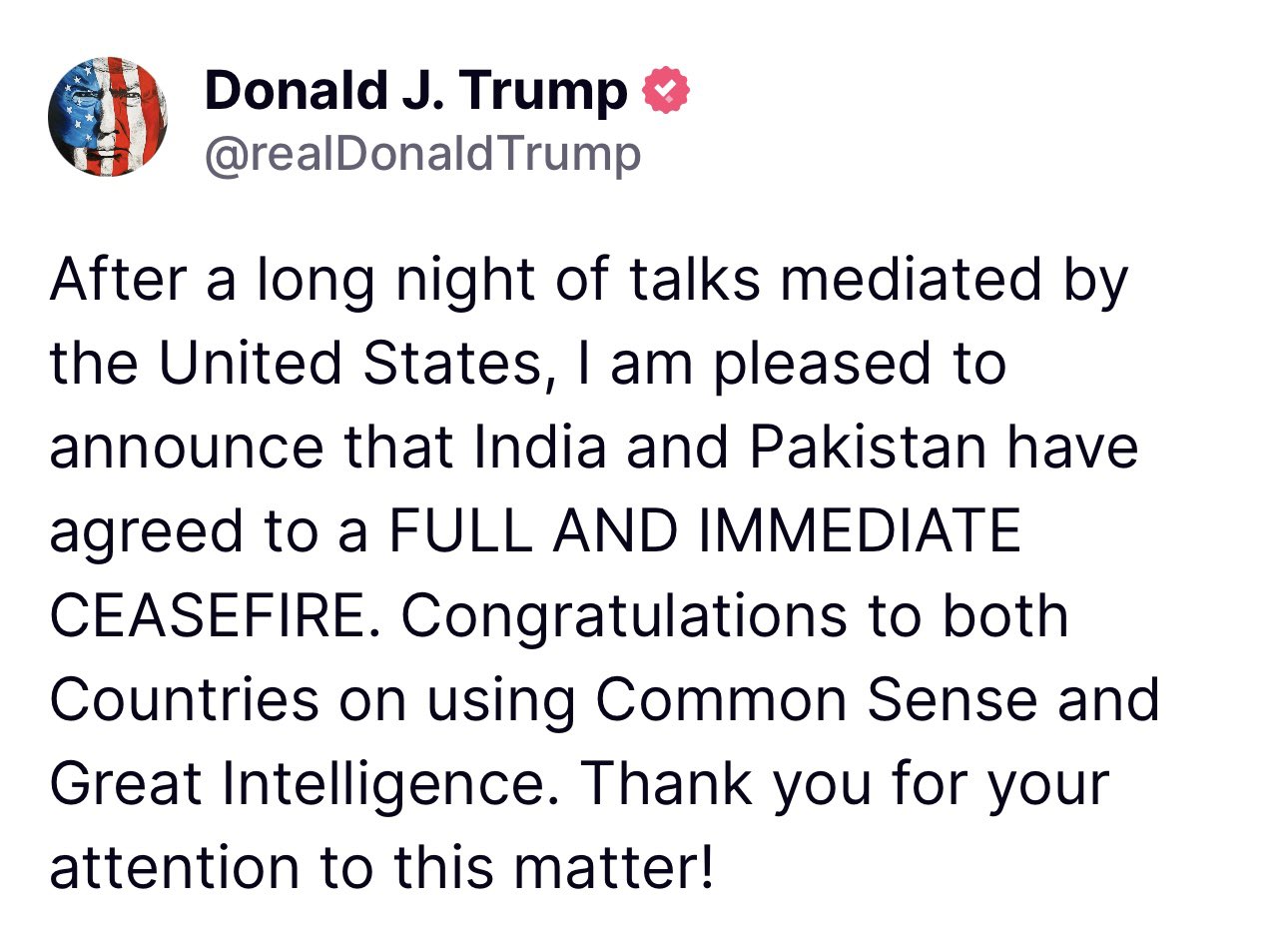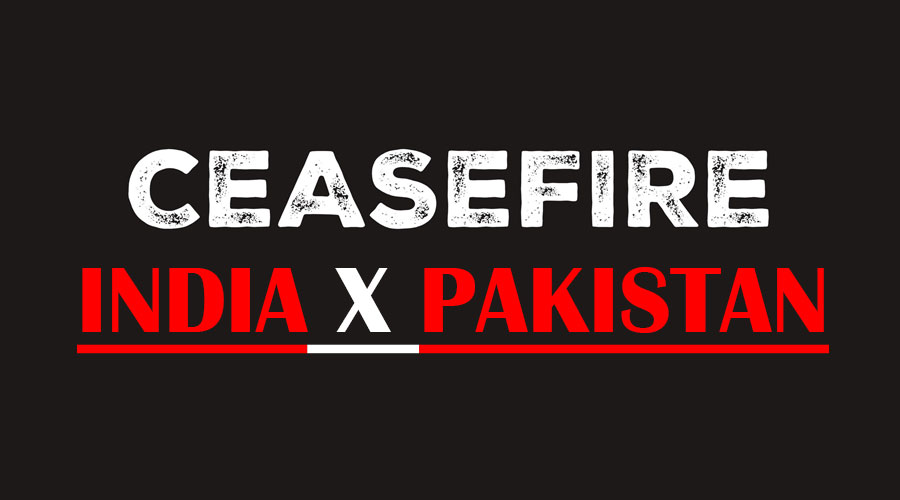India-Pakistan Ceasefire Halts Four Days of Military Escalation
New Delhi, India – India and Pakistan have agreed to an immediate ceasefire, effective from 5:00 PM IST on May 10, 2025, halting four days of intense cross-border military confrontations. The truce, a significant step toward de-escalation, was facilitated by US President Donald Trump and confirmed by India’s Foreign Secretary Vikram Misri following a critical communication between the Directors General of Military Operations (DGMOs) of both nations. All military operations across land, air, and sea have been suspended, with the DGMOs scheduled to hold a follow-up discussion on May 12 to evaluate the ceasefire’s progress.
The conflict erupted after a deadly terrorist attack in Pahalgam, which India attributed to Pakistan-based groups, prompting the launch of Operation Sindoor—a robust military response targeting terrorist infrastructure. Pakistan retaliated with missile and drone strikes, escalating tensions to a critical level and raising fears of a broader conflict. The situation disrupted civilian life, including the suspension of the Indian Premier League (IPL) 2025, and heightened security concerns across border regions.

US mediation proved pivotal in securing the ceasefire, with President Trump announcing the breakthrough during a press conference. Secretary of State Marco Rubio and Vice-President JD Vance engaged in intensive diplomatic efforts, coordinating with both nations to restore calm. Pakistan’s Foreign Minister Ishaq Dar welcomed the truce, emphasizing that peace must align with national sovereignty, while India’s External Affairs Minister S Jaishankar underscored India’s unwavering commitment to combating terrorism, warning that any future provocations would be met with a firm response.
The international community has responded positively to the ceasefire. The G7 nations issued a joint statement praising the agreement and urging both countries to pursue sustained dialogue to address underlying issues. The United Nations echoed this sentiment, with Secretary-General António Guterres calling for “restraint and diplomacy” to prevent further escalation. Regional powers, including China and Russia, have also expressed support for the truce, advocating for stability in South Asia.
On social media platform X, reactions range from relief to cautious optimism. Many users praised the diplomatic efforts, with one post stating, “Kudos to the US for stepping in—hope this ceasefire holds for the sake of peace.” Others emphasized the need for long-term solutions, with sentiments like, “Ceasefire is a start, but both nations must address terrorism and trust issues.” The truce has also sparked discussions about resuming normalcy, including the potential revival of cross-border trade and cultural exchanges, though analysts remain wary of lingering geopolitical challenges.
The ceasefire’s success will hinge on both nations’ commitment to maintaining peace and addressing the root causes of their tensions. For now, the agreement offers a critical respite, allowing India and Pakistan to step back from the brink of further conflict.


Comments (0)